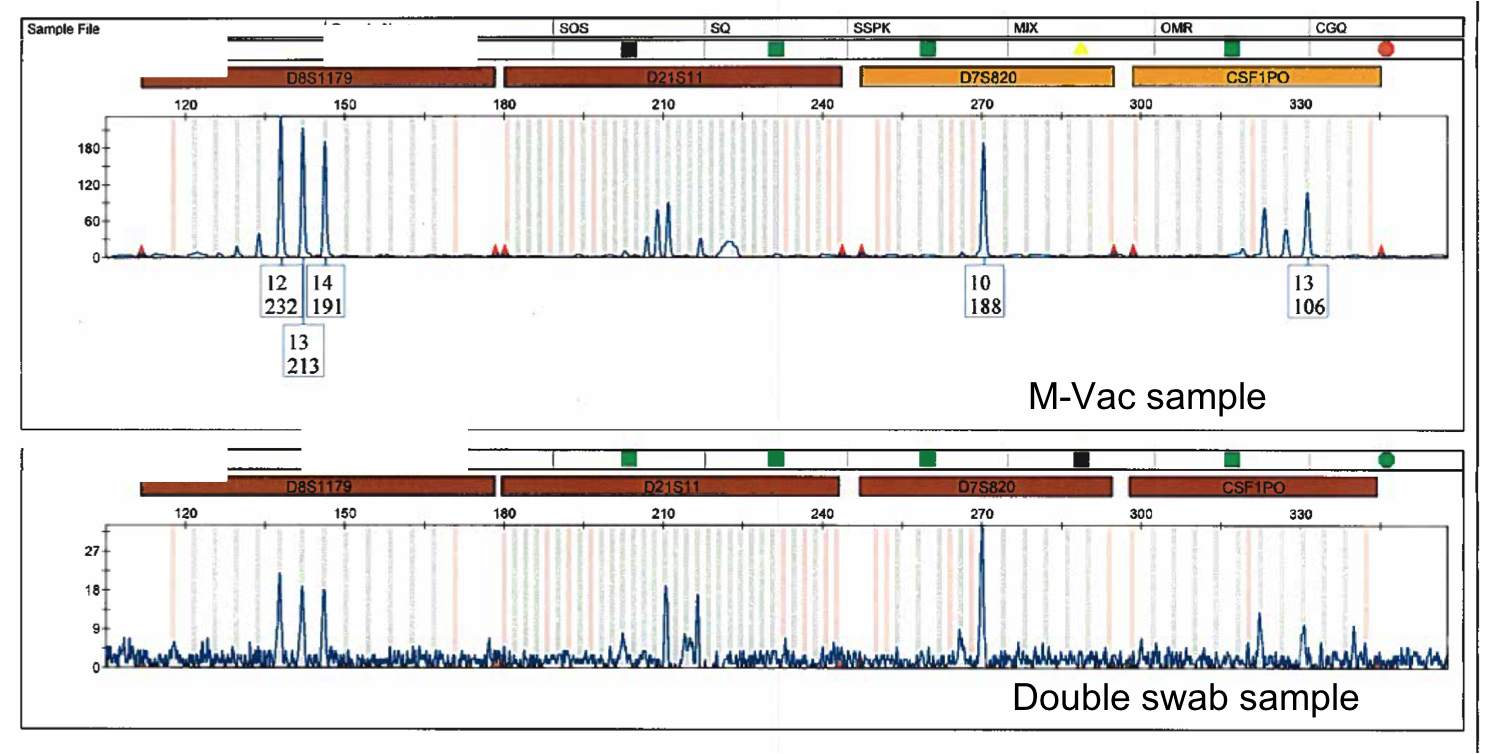
Elevate Your DNA Profiles Above The Noise

There's something about having more to start with. If you have more signal, your phone works better. If you have more concrete, the building is stronger. If you have more sugar, you can make sweeter cookies or sweet tea, and if you have more cellular material from evidence, the DNA profiles are stronger.
For years, the genomics, cellular biology, forensic science and other related industries have been focused on stretching minimal amounts of starter material into almost impossible outcomes. If the food production industry can collect even one cell of e Coli O157H:7 from a food surface, they will likely be able to duplicate that one cell, using the polymerase chain reaction (PCR), and eventually be able to declare that the food is contaminated. Similarly, in forensics, crime lab DNA scientists can now develop a DNA profile from a few cells that are smaller than a pinhead, when a decade earlier it took as much as a half-dollar sized sample to do the same thing. There is no disputing that science is advancing at a very rapid rate and what can be accomplished in the lab environment using new instrumentation is nothing short of incredible.
In light of these impressive advancements, the questions we need to ask are: “At what point do we see diminished and/or negative returns in the lab processes?” and “Where else can better gains be made?” Surely, for the e Coli example, the effort to make the PCR more sensitive wouldn’t produce much of a return on investment. Likewise, the process of creating a viable DNA profile in the forensic labs is also reaching a level of sensitivity that to continue to pursue higher levels of sensitivity would approach diminishing returns. So where do we turn to in order to continue advancing the science of cellular detection? There is a new focus on making the process faster, but the same limitations on sensitivity remain.
One area that has been relatively unchanged over the past decade is the collection stage of processing samples. The original cotton swab was invented in 1917, and although some advances have been made, the basic mechanics of the collection method are the same. Optimizing the swabbing method has become an art and a significant amount of time and effort has gone into ensuring it’s done correctly, but physics are physics. There are other collection methods such as tape lifting and scraping, but those have similar limitations to the swabbing method. The cutting method will get the vast majority of the cellular material that’s embedded in the substrate, but the method is limited by the size of the extraction tube so the surface area of the material that can be processed is very small. Of course these methods have their place as the major collection methods used, but that doesn’t mean there isn’t room for improvement or additional innovations. Based on the number of negative and/or inconclusive DNA results that are produced I’d say not by a long shot.
Enter wet-vacuum collection. This new DNA collection method is making waves in the forensics industry and is giving investigators another chance to solve cases.
The concept of combining a liquid and vacuum to get deeper into a surface certainly isn’t new. Most everyone has used a carpet cleaner at some point in their life, or at least should put it on their bucket list - right up there with climbing Mt. Everest. Seeing the amount of “stuff” one can pull out of a carpet or couch at home can approach a life changing experience. Compared to sweeping the carpet, which would only get the dirt from the top of the surface fibers, using a carpet cleaner will get the vast majority of the dirt and grime out of the carpet - which is the ultimate goal.
Using a wet-vacuum for forensic DNA collection on evidence has many of the same goals one would have in applying a carpet cleaner at home. If the investigator really wants to get the majority of the DNA material out of the fibers, cracks and crevices of evidentiary substrates, using a wet-vacuum just makes sense. Of course, if there is so much DNA material on the surface that you can see it with the naked eye (think of a blood spatter or similar scenario) then, by all means, use a swab or other method that is sufficient. But in a touch DNA case or where another method has failed to produce a viable profile, it may be time to pull out the big gun and get the job done.
Solving crime can be more than a little difficult. And, in today’s society, it’s even more difficult to move beyond the investigation without a good DNA profile to tie the suspect to the crime. Juries just expect hard evidence much more than they used to, and testimonies are becoming less and less reliable to gain convictions - in many cases justifiably so. So if you need a good strong DNA profile then starting the process with more DNA material simply makes sense. A couple of years ago all we had was research university data and the confidence that the wet-vacuum concept could work in an investigative setting. Now it’s well beyond the “proof of concept” stage and is proving that this new method of DNA collection is turning cases around and helping solve more crime. So, next time you get a negative or an inconclusive DNA result, remember that there’s still hope. Take another swing at it with a wet-vacuum and see if the profile can be elevated above the noise. I think you’ll be pleasantly surprised by the results.